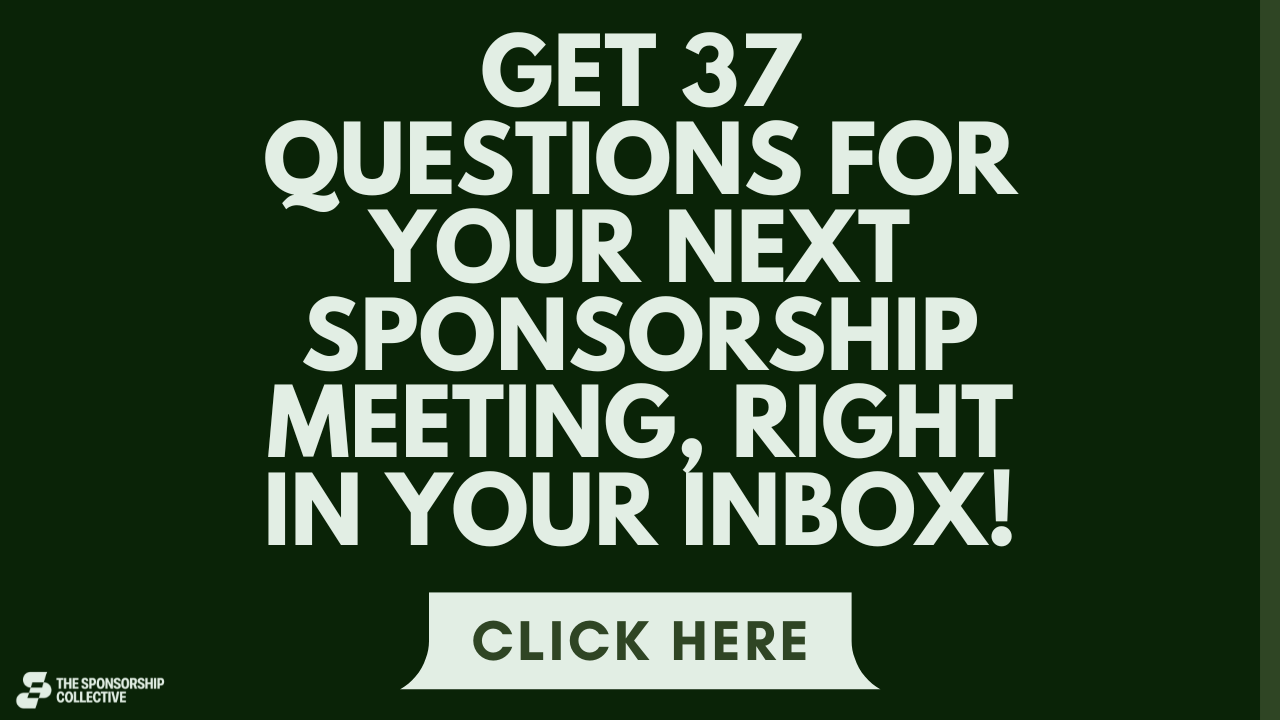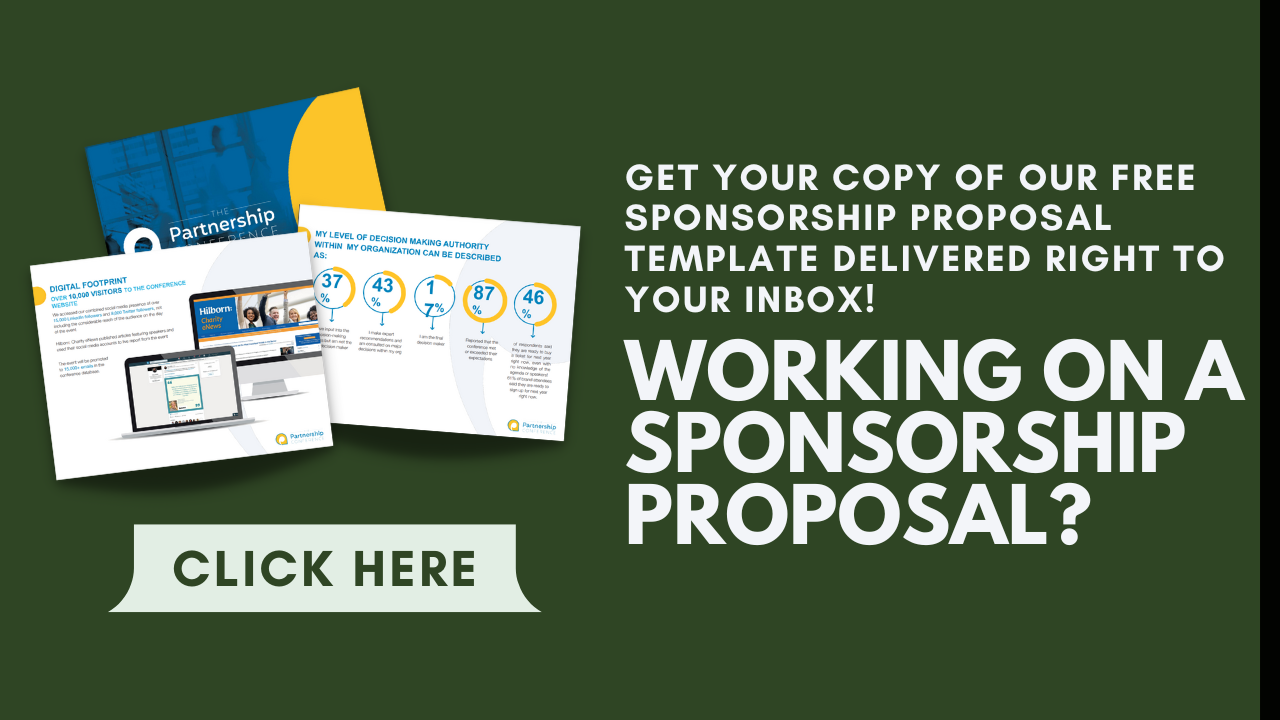Everyone wants to be a success story, but for most people, it doesn’t just happen overnight. It can require a lot of trial and error and plenty of failures before things start going right. If you’re looking to succeed in the sponsorship industry especially, what will it take?
Here are the traits of the people who succeed in the sponsorship industry:
- Have clearly defined goals and an idea of how to achieve them
- Willing to do research
- Won’t spend too much time on any one part of the sponsorship program
- Have contacts to get a foot in the door
- Knows when no means no
- Pursues sponsors of all sizes
- Learns from failure instead of letting it paralyze them
Which of these characteristics do you have? Which ones do you lack? In this article, I hope to show you why these traits can be the difference between failure and success in sponsorship. By the time you’re done reading, you should feel motivated to chase after your sponsorship goals with renewed vigor!
These Are the 7 Top Reasons People Succeed in Sponsorship
They Have Clearly Defined Goals and an Idea of How to Achieve Them
Setting goals is easy, but figuring out how you’ll get you from Point A to Point B? That’s the hard part. For example, let’s say you want to climb Mount Kilimanjaro. You’ve never scaled a mountain before, but you want to hike this one.
What do you need to do before you’re ready? In this case, you’d need hiking and backpacking gear. You’d also have to train for several hours per day to get yourself in climbing shape. You might try climbing a few mountains in your area before attempting Kilimanjaro.
Yes, your goal is a big one, but when you break it down into smaller chunks, it’s a lot easier to achieve that goal. You also know how you’ll eventually get to Kilimanjaro, how much money it will cost you, and how much time it will take to hike or climb to the summit.
Your sponsorship program must be organized in the same way. Lots of people think that sponsorship is as easy as finding a target sponsor, contacting them, and then waiting for them to say yes. Yet you know better, or at least I hope you do. You need to do a lot of legwork before you ever contact the sponsor.
If you need the refresher, here is my post on the anatomy of a sponsorship program that is definitely worth a read. You need to define your goals, research your audience (more on this in a moment), put together assets, value them, create compelling activation opportunities, draw up your sponsorship package, and then write your sponsorship proposal.
Completing each small goal brings you one step toward your ultimate goal of getting sponsorship. That doesn’t mean sponsorship is a surefire thing, just like training to climb Kilimanjaro doesn’t mean you’ll succeed your first time. If you’re doing all the right things though, success will follow sooner than later.

They’re Willing to Do Research
One of the biggest steps in securing sponsorship is researching. Yet this is also the step that most people want to gloss over. Well, not the successful ones. I know that research is time-consuming, and I’ve had clients balk at the thought of doing research. Some think they know their audience already, so what’s the point of more research? Others assume their audience won’t respond to a survey.
Let me address those concerns one at a time. First, unless you’ve surveyed your audience within the last couple of months, then it’s not a bad idea to see how your audience has changed. As for whether they’ll respond to a survey, not every customer will. Enough should that you can glean crucial details on your audience.
I talked about this recently in another post, but I want to bring it up here too. Audience research does not just benefit the sponsor since your audience is such a valuable asset to them. Knowing your audience is important for you too! You can’t sell products or services that your audience cares about without understanding their interests and pain points. You could make more money later by issuing a survey now. Doesn’t that make it worthwhile? I think so!
Those who are successful at sponsorship don’t stop after wrapping up their audience research. They also do some deep digging into their list of potential sponsors, even if that’s a long list. Imagine if you got lazy at sponsorship research so you missed the fact that your sponsor partners with a butchery while you’re a vegan company. That would be a bad look. You’d certainly lose some of your audience since they thought you upheld certain values and it appears that you don’t.
All this could have been avoided had you spent 10 more minutes researching the target sponsor. I’m not saying you have to know everything the sponsor company has ever done, but you do need to have done enough cursory research that you can avoid obvious sponsor mismatches and conflicts of interest.
They Won’t Spend Too Much Time on Any One Part of the Sponsorship Program
Those who are successful at sponsorship avoid falling into common traps. What do I mean by that? Well, as you put together your sponsorship program, you can follow two types of movement, which I talked about in this post.
You can be in motion or action. Both sound like a type of forward movement, but only one is. Motion is when you get stuck going in circles doing the same thing over and over. Action is when you move straight ahead.
Certain activities related to your sponsorship program can seem like action when they’re really just motion. For example, how many meetings have you had with your team about putting together assets? If it’s been weeks or months and your assets list isn’t finalized but you’re still meeting about it, then you’re going around in circles. It can seem like you’re succeeding, but you’re not.
Perhaps you’re strung up on writing your sponsorship proposal. You keep writing it, editing it, and rewriting it until it’s perfect. Many of my clients have mentioned that they can’t proceed with their sponsorship program until every part of it is sheer perfection. Yet what in this life is perfect? That’s right, nothing. Your sponsorship program won’t be either. All you’ll get out of trying to make your sponsorship program perfect is a lot of wasted time and money.
Another reason that you could be spinning in circles in your sponsorship program is due to the comfort of it all. You’re so used to doing these small sponsorship tasks that they become part of the routine. To you, it seems like you’re getting things done even though you’re not. The tasks stretch out forever because it’s too comfortable to assume any of them are truly done.
That’s why I recommend you start your sponsorship program even before you feel like you’re ready. Yes, I know. Who does that? Well, successful people, for one. I once had a client who decided to get on board with my sponsorship training even though she had held off on her sponsorship program for a long time.
What happened when she finally got things underway? She was negotiating for a five-figure sponsorship deal in a matter of weeks. Now, I’m not saying that it will happen exactly the same for you, but it very well could! You won’t know unless you finally move on from whatever step in your sponsorship program that you’ve been stuck on forever.
They Have Contacts to Get a Foot in the Door
When the time comes to talk to a sponsor, the thought of cold calling makes you nervous. You wonder how successful people get over their anxiety and just do it. Here’s a secret: they don’t! Yes, that’s right, successful sponsorship experts don’t cold call target sponsors.
Rather, they have a list of contacts in the industry. Through a few games of telephone, they find someone in their circle who can act as a connection into the sponsorship company. They mention their contact during that introductory phone call or email and the sponsor is usually more willing to talk after discovering they have a contact in common.
It’s okay if right now your contact list is small. Here’s my suggestion. For every sponsorship you have going forward–maybe even all your business partnerships going forward–stay in touch. You don’t have to talk every week, but every few months, maybe you forward them an article related to their industry and say “hey, I saw this and thought of you.” Or perhaps you tag them in a relevant post on social media.
These are simple means of keeping the connection alive. Then, when the time comes to talk to a new sponsor company, your contact won’t mind helping you out. This is like a microcosm of what a successful mutually beneficial relationship should be like between you and your next sponsor.

They Know When No Means No
A target sponsor’s reply can leave you feeling confused. You pick and pick at their response like you’re trying to translate a long-lost language. I do agree that sometimes what a sponsor says is not truly what they mean, so don’t lose that inquisitiveness, as it’s good to have if you want to be successful in the sponsorship industry.
I have a great infographic about decoding sponsor replies. If you hear something like “let me think about it,” this sounds pretty noncommittal. The ones who are successful in sponsorship will ask the target sponsor what they need to make their decision. Sometimes, the answer may be further documentation. In other cases, the sponsor needs more time, as they have to talk to another key stakeholder within the company who’d been traveling.
Maybe the target sponsor tells you “I don’t have time.” You could ask when they might be more available and then put them on your list of sponsors for your event later in the year. You can do the same if the sponsor says their budget is a little thin right now.
Yet if a sponsor tells them no, those who are successful at sponsorship will not try to decode that. They know that a flat no is about as clear-cut of an answer as you can get, so they move on. They also don’t waste months waiting for an email or phone call back. Sure, they’ll follow up once, maybe even twice, but if a week or two has gone by without a response at that point, they take the silence as a no.
I know it can be hard to hang it up when you’ve gotten to the point where you’ve talked with and even met up with the sponsor a few times. It seems like all the work is for nothing. Yet waiting around for an answer that will probably never come is even worse. You’re not even spinning your wheels at this point. You’re just idling in park waiting for something to happen until you run out of gas.
If things fall apart at this point, know that you do walk away with something: experience. The next time you go after a sponsor, you’ll know even better what to do and what to avoid.
They Pursue Sponsors of All Sizes
If you’re looking for fast success in sponsorship, one of the best ways to get it is to go after the superstar sponsor, right? This is as useful a way to spend your time as playing the lottery hoping you can quit your job and live off your money for life. Sure, some people win it big, but the chances are so low that you’re better off working for your money.
I’m not telling you that bigger sponsors are off-limits, but you should get a few smaller sponsorships under your belt first. The more success you have in sponsorship, the easier it is to open doors that were previously locked tight for you. Other sponsors will hear of your wonderful events, smart activation ideas, and stellar treatment of your sponsor partners. They may even start coming to you!
They Learn from Failure Instead of Letting It Paralyze Them
Having had success in sponsorship does not preclude failure. Yet the most successful people in the sponsorship industry know that failure is not the end of the world.
I know it can seem that way when you’re really banking on a sponsor and the deal falls through. It’s too easy at that point to think “well, if I had just made my sponsorship program perfect, this wouldn’t have happened.” So you go back to doing what is comfortable, which is slowly pulling together activation ideas. You’re in this little bubble that feels good because you’re not getting rejected. You’re also not taking any financial risks.
In the meantime, sponsorship opportunity after sponsorship opportunity passes you by and you’re none the wiser because you won’t exit your bubble.
Do you remember when you learned to ride a bike as a child? You fell off the bike plenty of times, right? You probably even scraped up your elbows and knees, and you may still have the scars to prove it. Yet after one tumble, you didn’t vow to yourself that you would never ride a bike again. Instead, you kept at it until you figured out what worked.
You can’t give up on sponsorship because it didn’t work out for you. Know that as you pursue sponsors, you’ll be rejected dozens of times. And no, failure didn’t occur because your sponsorship program isn’t flawless. Sometimes failure is something you did or didn’t do and other times it’s on the sponsor. In certain situations, the stars just don’t align.
I always say failure can be a learning opportunity. It can mold you into a smarter individual who pursues better sponsors, but you have to be willing to look at it the right way. Failure can only be a teacher if you let it be.

Conclusion
Success in the sponsorship industry comes to those who work hard at their sponsorship program (but not indefinitely), have the right connections, and have well-researched audience data to present to a target sponsor. As I said before, being successful in sponsorship doesn’t mean you’re exempt from failure, but you can extract lessons from these experiences so the failures become fewer.
I hope this article gave you some great ideas for bettering your sponsorship program!
- About the Author
- Latest Posts
Chris Baylis is the Founder and Editor-in-Chief of The Sponsorship Collective.
After spending several years in the field as a sponsorship professional and consultant, Chris now spends his time working with clients to help them understand their audiences, build activations that sponsors want, apply market values to their assets and build strategies that drive sales.
Read More about Chris Baylis

